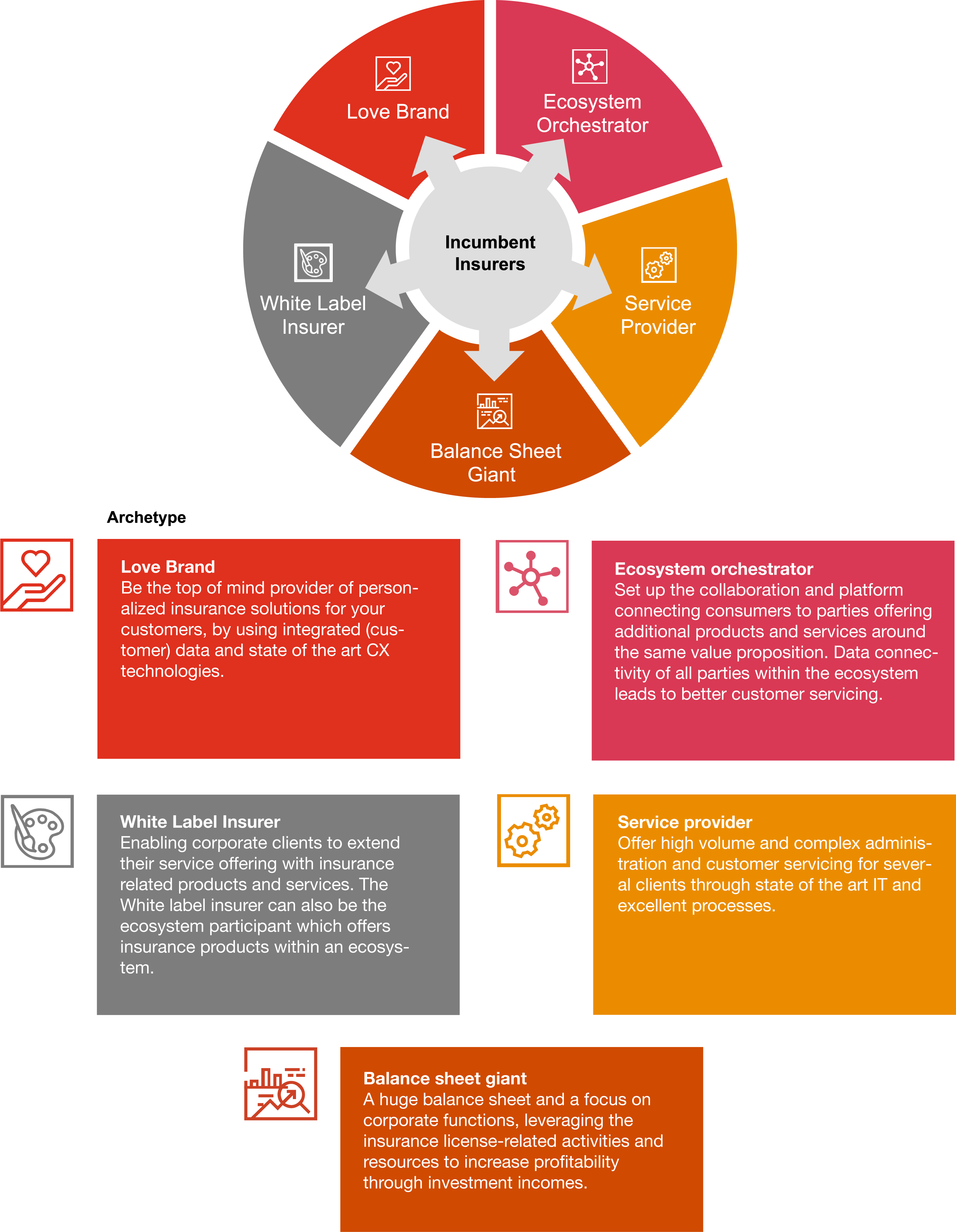{{item.title}}
{{item.text}}

{{item.text}}

The insurance sector is facing significant challenges. This applies not only in the short term, but the sustainability of insurers’ business models is also under pressure in the longer term. Cost reduction remains a strategic priority to stay competitive in a saturated market. We provide guidance and ensure your organisation is well positioned for the future. Together with you, we seek solutions for your immediate questions.
{{item.text}}

{{item.text}}
The current insurance revenue model is under pressure. Economic, demographic, technological and social trends require reconsideration of the business model to maintain a competitive position in the market and continue to fulfill a fundamental role in society. Developing a sustainable business model in a highly volatile market requires building on large trends as well as on your own strengths. We developed five archetypes that can serve as growth strategies to establish and maintain a competitive position: Love Brand, Ecosystem Orchestrator, Service Provider, Balance Sheet Giant and White Label Insurer.
In search for competitive advantage, insurers must make a choice on their sustainable (growth) strategy to become and stay future proof. Depending on the chosen growth strategy, insurers have to consider the impact on their organizational set up and the available capabilities within their organization. For each archetype, we outline the organizational model and the most important capabilities required to move towards a certain archetype. Note however, that the archetypes serve as guides to make a well-considered choice for the future. It is not necessary to move rigidly to one specific archetype only, as strategic and operational choices will depend on your own strengths and maybe even a differentiation of your strengths within focus areas or business lines.
Per archetype, the impact on the current operating model will have to be determined as well as the core capabilities needed to be developed towards a Best in Class performance.
PwC has put together a multidisciplinary team of experts in the field of business and software development that is able to generate IT solutions to manage business issues.
A platform that facilitates automated risk analyses on the financial statements of customers, counterparties and suppliers.
A Salesforce-based platform that brings together all of the parties involved in a Customer Due Diligence, including the clients themselves.
The future of insurers is determined by agile and digital organisations. InsurTech and digital technology will increasingly become more crucial. New ways of pricing, ongoing cost reduction and market consolidation are other subjects that will strengthen the profitability of insurers.
Cost reduction as strategy
To ensure the future competitiveness in a saturated market, cost reduction will remain a key strategic topic. Even the narrow margins, the low interest rates and the ban on commission for complex products demand a fierce cost policy. How do you ensure that your organisation keeps the costs low for your legacy systems and closed books?
A continuous strategy of cost reduction asks, among other, research for outsourcing, for example your back office, the operation of support departments. Our strategy consultants of Strategy& develop together with you a growth strategy and accompanied operating model where digitisation will be placed.
To reduce complexity in your organisation, we work on simplifying and standardising your organizational structure and your commercial and internal processes. We guide in all aspects of transformations, like adjusting your administration to cloud computing and changing the working culture
'We have discussions about the dilemmas that insurers face, because we are convinced that critical discussions will help the sector forwards.'
Gert-Jan Heuvelink







